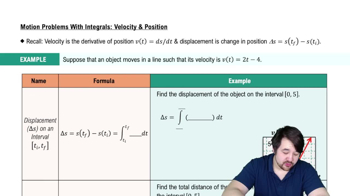Average values Find the average value of the following functions on the given interval. Draw a graph of the function and indicate the average value.
ƒ(𝓍) = 1/(𝓍² + 1) on [―1, 1]
 Verified step by step guidance
Verified step by step guidance Verified video answer for a similar problem:
Verified video answer for a similar problem:



 6:37m
6:37mMaster Average Value of a Function with a bite sized video explanation from Patrick
Start learning